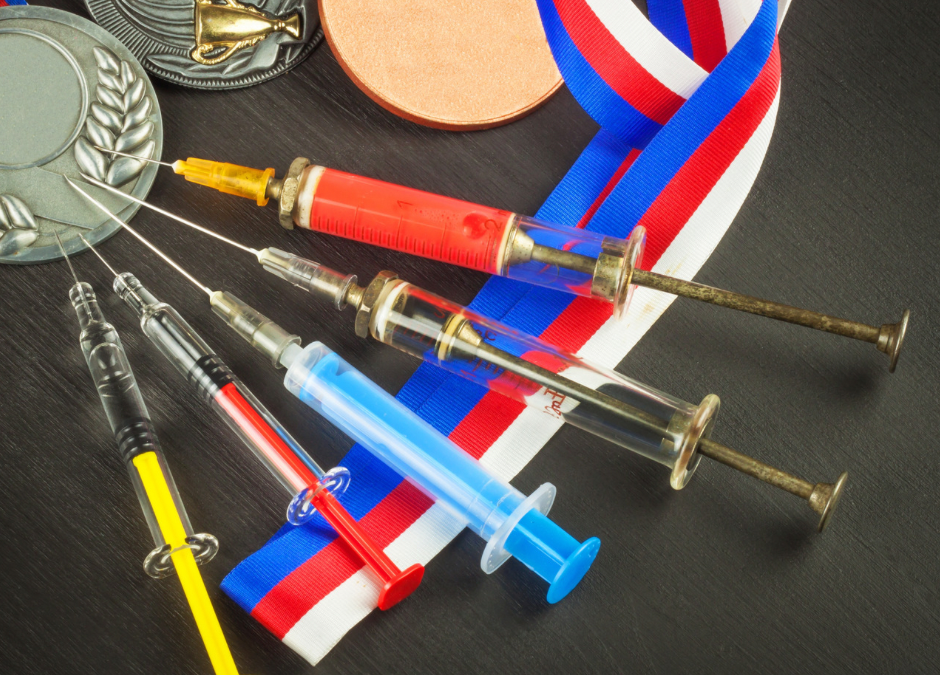
Why Diversity in Law Matters More Than Ever
September 30, 2024
Strategies for Empowering Black Women in Law
October 1, 2024By Reva Naidu.
Reading time: six minutes
“You run like a girl!”
Introduction
The recent controversy at the Paris Olympics 2024 regarding Algerian boxer Imane Khelif has shed a light upon the validity of gender testing in sports. In this article, we take a look at a landmark case in this field – Chand v International Association of Athletics Federation (2017) – and the repercussions of the Court for Arbitration for Sport’s (CAS) consequential decision on the development of regulations and the protection of female athletes’ human rights.
Female athletes are often required to undergo stringent ‘gender and hormone’ tests to determine whether they ‘qualify as women’ in order to compete under the category. If this testing reveals an ‘abnormally high’ level of testosterone, female athletes are diagnosed as DSD athletes (differences in sex development) despite being born as ‘biological’ women, are asked to undergo surgery and take hormonal medications to lower it. They must either agree to do this, or are banned from competing as women, as regulated by the International Association of Athletics Federation (IAAF). This has been the experience of well-established athletes such as Namibian sprinter Christine Mboma, and South African runner Caster Semenya.
Scientifically, testosterone is known to promote strength and muscular mass and aid in the body’s recovery after exercise. Thus, it was selected as a means of distinguishing males from women. Even with high testosterone levels, female athletes can have levels far above the typical range for women. All they have to do is fall below what the Athletics Federation considers to be the men’s range.
Case Facts
In 2014, Indian sprinter and national 100-metre champion, Dutee Chand, was found to have high levels of testosterone and other androgens when tested in Delhi, India. These levels would disqualify her from running based on the IAAF’s hyperandrogenism regulations. She was also recommended hormone – suppressing drugs and medical intervention to lower her androgen levels. Instead of acquiescing, she took the IAAF, now known as World Athletics, to the Court for Arbitration of Sport, based in Lausanne, Switzerland.
In Chand (2017), Chand challenged the ban placed on her due to ‘Hyperandrogenism to Compete in Women’s Competition’, as stated by the IAAF. Chand stated, in a letter to the IAAF, “I am unable to understand why I am asked to fix my body in a certain way simply for participation as a woman. I was born a woman, reared up as a woman, I identify as a woman and I believe I should be allowed to compete with other women.”
The regulations, according to Chand, unlawfully discriminated against athletes who were female or who possessed a specific natural physical characteristic, were disproportionate to a valid objective, were based on assumptions, and not in fact, about the relationship between testosterone and athletic performance, and were an unauthorised form of doping control. These were the issues that the CAS considered, and each of these arguments were rejected by the IAAF.
Further, the Court analysed the burden of proof for the validity of the regulations along with the standard of proof for the same – based on procedural requirements.
Legal Basis and Relevant Regulations
The IAAF’s regulations stated: “A female with hyperandrogenism who is recognised as a female in law shall be eligible to compete in women’s competition in athletics provided that she has androgen levels below the male range (measured by reference to testosterone levels in serum) or, if she has androgen levels within the male range she also has an androgen resistance which means that she derives no competitive advantage from such levels.” According to Regulation 1.3 of the Hyperandrogenism to Compete in Women’s Competition Regulations, “No female with hyperandrogenism shall be permitted to compete in the female category of an International Competition until her case has been evaluated by the IAAF in accordance with these Regulations.”
The Olympic Charter and Article 3 of the IAAF Constitution state the aims of the organisations to prevent any discrimination based on gender, amongst other characteristics like age, race, and politics. Although the Court determined that the athlete-to-athlete gender division is acceptable and serves to benefit female athletes by providing a level playing field in which they can participate in meaningful competition, it also noted that human sex is not just binary and that “nature is not neat”.
Decisions and Findings
The Court of Arbitration of Sport found that Chand was discriminated against by the regulations, and also stated that the Hyperandrogenism rules were inherently, prima facie, discriminatory based on the aforementioned Olympic Charter, the IAAF Constitution, and the laws of the Principality of Monaco. Upon analysing the proportionality of the regulations, it was stated that the rules did not serve to achieve their goal of eliminating a ‘competitive advantage’ that female athletes with raised testosterone levels would have, due to a lack of evidence demonstrating this perceived benefit.
Therefore, the Court decided to suspend the IAAF’s Hyperandrogenism to Compete in Women’s Competition Regulations for a period of two years, and Chand was allowed to compete in World Athletics events without having to alter her natural hormonal endogenous compositions. This significant decision established that the IAAF’s regulations are subject to global administrative law and international sports law.
Human Rights and Gender-Testing in Sport
The Human Rights Council, during its 44th session in mid-2020, discussed the implications of gender-testing rules on women in athletic competition, through a lens of sports law and human rights law.
The Council stated that the application of female eligibility rules breaches the right to non-discrimination, while denying athletes with DSD an equal opportunity to compete in sports. Other present methods of managing female eligibility may have a detrimental effect on how the exercise their human rights, with particular scrutiny given to the the right to freedom from torture and other cruel, inhuman or degrading treatment or punishment, the right to work and to the enjoyment of just and favourable conditions of work, the right to the highest attainable standard of physical and mental health, the right to respect for the dignity, bodily integrity and bodily autonomy of the person, and the right of everyone to be free from arbitrary interference with their privacy. These rights are a part of the European Convention of Human Rights.
Further bolstering this discussion, in Semenya v Switzerland (Application no. 10934/21), the European Court of Human Rights decided in favour of the aforementioned athlete, Caster Semenya, that requiring her to undergo hormone medication would violate Articles 3, 8, 13, and 14, of the Convention.
The Human Rights Council, and the United Nations by extension, thus recommended an increased scrutiny on regulating sports bodies, such as FIFA, World Athletics, and even the International Olympics Comittee, by individual states, as it believed that these global regulatory bodies are not held sufficiently accountable for the impact of their actions.
Current Developments in Regulations
Although the restrictions on Chand were removed after this case, the IAAF, now known as World Athletics, created new rules for athletes with DSD. These came into effect on 31 March 2023, and are applicable from that day forward.
Athletes that are subject to these rules must have a concentration of testosterone of 2.5 nmol/L or more when tested, as a result of which, there is a ‘sufficient androgenising effect’. To avoid suspension or disqualification, they are required to continuously maintain the concentration of testosterone in their test below 2.5 nmol/L3 for a period of at least 24 months, and at all times throughout their period of training and competition.
It is likely that these new regulations may be tweaked further after the publicity and circumstances surrounding the Algerian wrestler, Imane Khelif. Human rights organisations, and other sporting bodies, have encouraged more privacy of test results in order to maintain the dignity of athletes and protect their fundamental rights. The IOC and World Athletics must play a crucial balancing act between maintaining equal standards of competition while not discriminating against female athletes with naturally-occurring biological characteristics.
Further Reading
- The Olympic Charter, 8 December 2014
- International Association of Athletics Federation Competition Rules 2014-2015
- Eligibility Regulations for the Female Classification (Athletes with Differences of Sex Development), 31 March 2023
- Human Rights Council Forty-fourth Session (15 June-3 July 2020) – ‘Annual report of the United Nations High Commissioner for Human Rights and reports of the Office of the High Commissioner and the Secretary-General – Promotion and protection of all human rights, civil, political, economic, social and cultural rights, including the right to development.’





